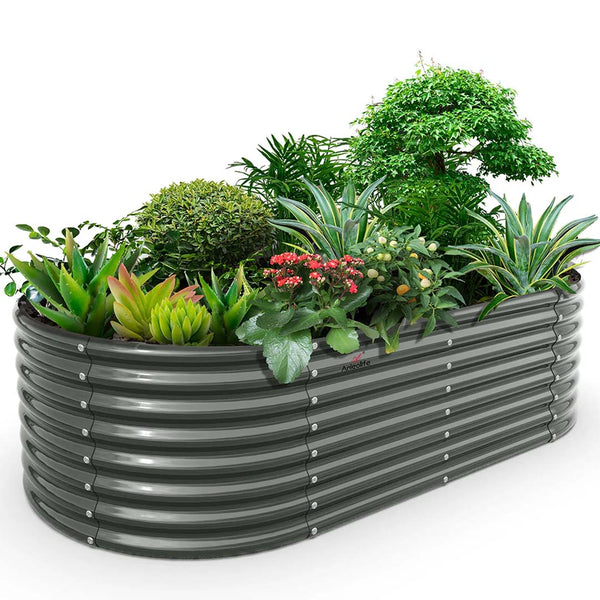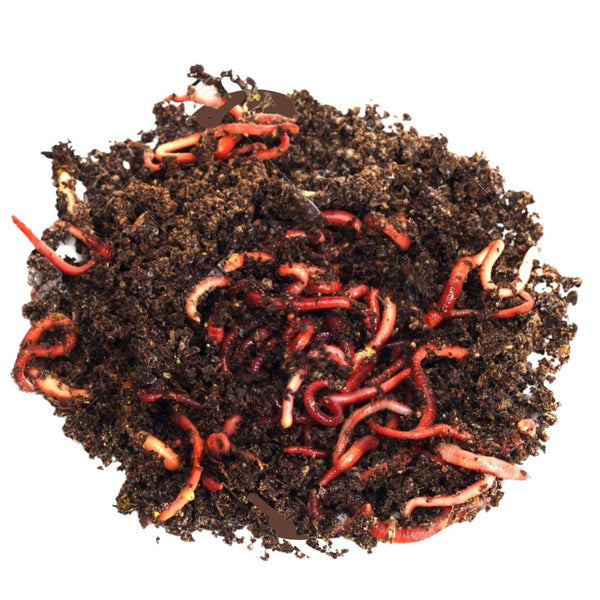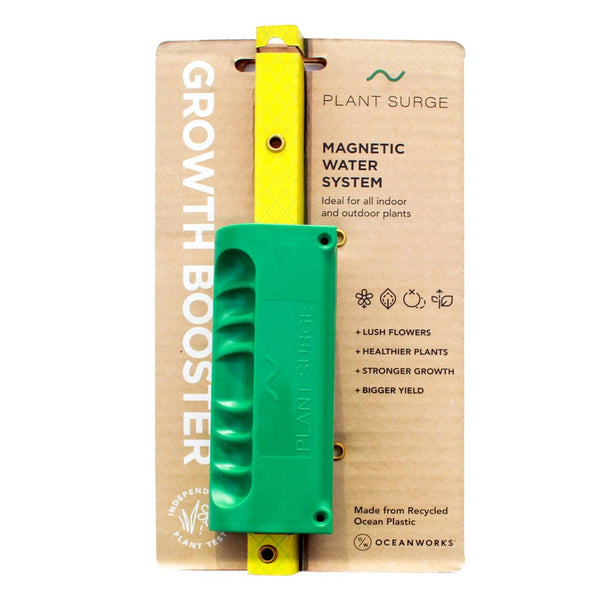The Revolutionary Electroculture Gardening Method That's Making Traditional Growing Obsolete

Understanding Electroculture Gardening
Electroculture gardening is a nifty way to supercharge your plants using electricity. It's been around for ages, but it's making a comeback as folks look for natural ways to get their gardens booming.
History and Revival
Believe it or not, the idea of using electricity to help plants grow has been kicking around for centuries. Back in the 18th century, people noticed that trees seemed to grow faster under the aurora borealis, thanks to its electrical vibes. Fast forward to the 18th and 19th centuries, and both scientists and farmers were all about experimenting with electroculture. The late 1800s to early 1900s saw a surge in research, sparked by the observation that electrical storms seemed to give plants a growth spurt. Lightning was thought to turn atmospheric nitrogen into a form that dissolved in rain and fed the soil.
Nowadays, electroculture is back in the spotlight as gardeners hunt for eco-friendly ways to boost their crops. With the buzz around organic and chemical-free gardening, this method is catching the eye of those looking to tackle gardening woes with a fresh twist.
Basic Principles
Electroculture is all about giving plants a little zap with specific electrical frequencies. This can speed up seed germination, get roots growing strong, and generally give plants a leg up. The trick is to stick conductive stuff like metal rods or wires into the soil near your plants. These act like antennas, grabbing energy from the air and channeling it to your green buddies (HGTV).
Studies have shown that electroculture can seriously boost crop yields and plant size. Dr. Andrew Goldsworthy from Imperial College London found that even weak electric currents can give plants a growth boost.
| Principle | Description |
|---|---|
| Energy Capture | Conductive materials snag energy from the atmosphere. |
| Electrical Stimulation | Certain frequencies make plants grow better. |
| Soil Interaction | Helps plants soak up nutrients and grow strong roots. |
By getting the hang of these principles, we can see how electroculture gardening is a cool way to amp up plant health and productivity. If you're curious about diving deeper into this method, there are plenty of techniques and uses that make electroculture a tempting option for today's gardeners.
Benefits of Electroculture Gardening
Electroculture gardening is shaking up the way we grow plants by using electrical currents to boost growth and productivity. This fresh approach offers a bunch of perks that can help us hit our gardening goals, whether we're health-focused homesteaders, eco-friendly city gardeners, or seasoned pros looking for that extra edge.
Bigger Harvests
One of the coolest things about electroculture gardening is how it can pump up plant yields. Studies show that zapping plants with electrical currents can kickstart their growth, leading to bigger and stronger plants. This means more fruits, veggies, and other goodies. Electrified seeds sprout faster and give a better yield than those left to their own devices.
| Crop Type | Yield Increase (%) |
|---|---|
| Peas | 20-30 |
| Tomatoes | 15-25 |
| Lettuce | 10-20 |
| Carrots | 15-30 |
Check out this table showing how much more you can get from different crops with electroculture. By jumping on this bandwagon, we can make the most of our gardens and really enjoy the fruits of our labor.
Better Nutrient Absorption
Electroculture gardening doesn't just give us more plants; it helps them soak up nutrients better too. Electrical currents make it easier for plants to grab the good stuff from the soil. This means our plants can get what they need without us having to dump a ton of synthetic fertilizers on them. So, we end up with healthier, more nutritious produce and a smaller environmental footprint (Altifarm).
| Nutrient | Uptake Improvement (%) |
|---|---|
| Nitrogen | 15-25 |
| Phosphorus | 10-20 |
| Potassium | 20-30 |
| Calcium | 15-20 |
This table shows how much better plants can absorb key nutrients with electroculture. By boosting nutrient uptake, we make sure our plants are not just more productive but also healthier and tougher.

Bringing electroculture gardening into our routine can lead to stronger plants, bigger harvests, and a greener way to garden. As we dive into this new method, we can look forward to a future filled with bountiful harvests and healthier food choices. For more tips on getting started, check out our guide on electroculture gardening.
Implementing Electroculture Techniques
Alright, folks, let's get our hands dirty with some electroculture gardening magic! We're talking about jazzing up our gardens with antennas, ground rods, and magnetic coils. These nifty tricks can seriously boost our green thumb game.
Antennas and Ground Rods
Antennas are like the superheroes of electroculture. These metal wires or rods grab energy from the air and send it straight to the soil, giving our plants a little extra oomph. Ground rods are their trusty sidekicks, stuck in the dirt next to our plants to keep the electricity flowing. Together, they create a buzzing environment that our plants just love.
| Component | Function |
|---|---|
| Antennas | Snag energy from the air and feed it to the soil |
| Ground Rods | Keep the electricity moving into the soil |
The idea here is that plants can get a kick out of electrical currents or electromagnetic fields. With antennas and ground rods, we might see our plants growing stronger and faster, making our gardens more bountiful and eco-friendly. Curious about how this works? Check out our article on what is electroculture.
Magnetic Coils and Energy Capture
Now, let's talk about magnetic coils. These babies are made from copper wire and wrapped around the stems or bases of plants. Their job? To whip up a concentrated electromagnetic field that gives our plants a growth spurt.
| Component | Function |
|---|---|
| Magnetic Coils | Create an electromagnetic field to boost plant growth |
The theory is that these coils can tweak energy fields, helping plants grow better. Some studies even suggest that plants exposed to certain electrical frequencies can sprout faster, develop stronger roots, and grow like crazy (Savana Garden).
By adding these techniques to our gardening toolkit, we can create a lively and responsive environment for our plants. This means bigger harvests and healthier plants that can fend off pests and diseases. If you're itching to try this at home, check out our guides on diy electroculture and electroculture antenna designs to start supercharging your garden naturally.
Practical Applications of Electroculture
Electroculture gardening is shaking up how we grow our green friends, offering fresh ways to boost plant health and productivity. Let's chat about two big perks of electroculture: making plants grow like crazy and keeping pesky bugs at bay.
Plant Growth Stimulation
One of the coolest things about electroculture is how it can turbocharge plant growth. Folks who swear by it say that zapping plants with a bit of electricity can pump up the hormones that make plants stretch and grow. This means quicker growth, bigger harvests, and more flowers than you can shake a stick at.
Electroculture works its magic by getting plants to divide and stretch their cells with just the right electromagnetic vibes. This means bigger, tougher plants that soak up nutrients like a sponge and photosynthesize like champs. The whole plant system gets a boost, leading to bumper crops of veggies, fruits, and flowers (Homes & Gardens).
| Benefit | Description |
|---|---|
| Faster Growth | Plants hit maturity sooner, so you can harvest early. |
| Higher Yields | More food from less space, even if the soil's not great. |
| Enhanced Nutrient Uptake | Plants get better at grabbing the good stuff. |
| Stronger Plants | Tougher against bugs and diseases. |
Pest Deterrence
Besides making plants grow like they're on steroids, electroculture can also help keep pests away. Healthier plants, thanks to electroculture, have beefed-up immune systems, making them tougher against diseases and bugs. This means less need for nasty chemicals, which is music to the ears of eco-friendly gardeners.
Electroculture doesn't just help plants; it also perks up the soil by boosting microbial activity and making the soil structure better. This leads to richer, more resilient soil that can support healthy plant growth for the long haul (Savana Garden).
| Pest Deterrence Benefit | Description |
|---|---|
| Natural Resistance | Healthier plants shrug off pests easier. |
| Reduced Chemical Use | Less need for synthetic bug killers. |
| Improved Soil Health | Helps good microbes that fend off pests. |
By tapping into electroculture, we can grow gardens that not only give us loads of produce but also help the environment. Whether we're health nuts living off the land or city folks with a green thumb, electroculture gardening gives us a sustainable way to garden like pros. For more tips on getting started, check out our articles on electroculture antennas and electroculture gardening copper wire.
Challenges and Future of Electroculture
We're diving into the world of electroculture gardening, and while it's got folks buzzing, there are some bumps in the road we need to chat about. Sure, it's exciting, but let's not ignore the hurdles.
Lack of Scientific Evidence
First up, the science bit. Electroculture gardening is like that new kid on the block who hasn't quite proven themselves yet. There's a lot of chatter and personal stories about how it works wonders, but when it comes to hard scientific proof, we're still waiting. Plant experts often roll their eyes at electroculture, calling it pseudoscience because there's no solid explanation for how zapping plants with electricity could make them grow better (Garden Professors).
Right now, electroculture is missing those all-important peer-reviewed studies that would give it a thumbs-up from the scientific community. Many fans of this method swear by their own experiences, but without the data to back it up, it's tough for everyone to jump on board. We need more research to give electroculture the credibility it needs to be taken seriously in the gardening world (Green Matters).
Potential for Sustainable Agriculture
But hey, let's not throw the baby out with the bathwater. Electroculture could be a game-changer for sustainable farming. If it turns out to be legit, it might offer a way to boost plant growth without relying on chemical fertilizers. Imagine using the energy around us to make soil healthier, keep it moist, and help plants fight off bugs and diseases.
These potential perks are music to the ears of gardeners who care about health, the environment, or just want to be more self-sufficient. With the right breakthroughs and research, electroculture could become a go-to method for growing better food with fewer outside resources.
As we keep exploring electroculture, we're crossing our fingers that future studies will give us the scientific proof we need to back up this fresh approach to gardening. By tackling the current challenges and sticking to eco-friendly practices, we're aiming for a gardening future that's both productive and resilient.























